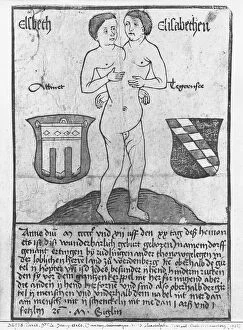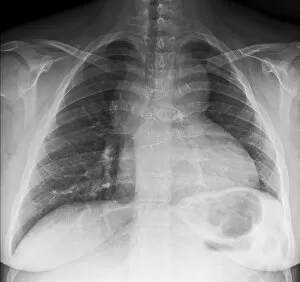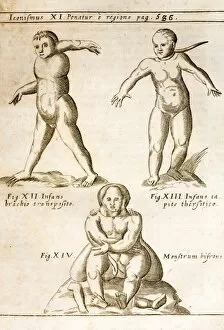Birth Defect Collection
"Unveiling the Complexities of Birth Defects: A Historical Perspective" Intriguing glimpses into the realm of birth defects have been captured throughout history
All Professionally Made to Order for Quick Shipping
"Unveiling the Complexities of Birth Defects: A Historical Perspective" Intriguing glimpses into the realm of birth defects have been captured throughout history, shedding light on the intricacies and challenges faced by those affected. From ancient manuscripts to modern medical imaging, these captivating hints offer a window into our understanding of conditions that shape lives. One such revelation comes from "Internal Hydrocephalus, " an illustration found in Nosologie Naturelle. This depiction showcases the internal workings of this condition, emphasizing the impact it has on brain development. Similarly, Siamese children are portrayed in a black and white photograph from the Rhodion manuscript, revealing their unique connection and prompting contemplation about their shared journey. Elsbeth and Elisabethen, two Siamese girls depicted in a woodcut with watercolor accents, captivate viewers with their extraordinary bond. Their intertwined existence raises questions about identity and individuality within conjoined twins' lives. The unsettling image titled "Child with a Deformed Head" from Les Ecarts de la Nature transports us to Paris as we witness society's fascination with anomalies during that era. Albrecht Durer's artistic prowess is evident in his creation of "The Monstrous Pig of Landser, " which serves as both an artistic marvel and testament to humanity's curiosity surrounding deformities. Advancements in medical technology bring us closer to comprehending these conditions today. X-rays reveal haunting images like deformed hands (X-ray C017/7561), cervical ribs (X-ray C017/8024), congenital heart disease (X-ray C017/8020), extra fingers (X-ray C017/8007), highlighting how science aids our understanding while evoking empathy for those affected. An eerie yet enlightening illustration presents itself through a deformed calf skeleton (illustration C018/0777). Its presence reminds us that nature can be unpredictable but also serves as a testament to resilience and adaptation.

















